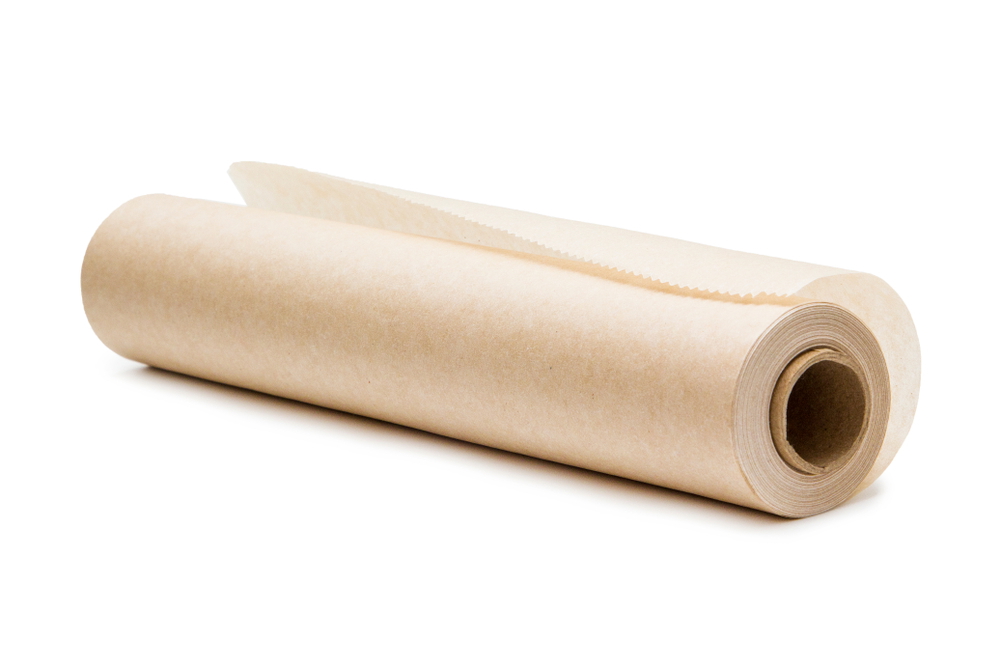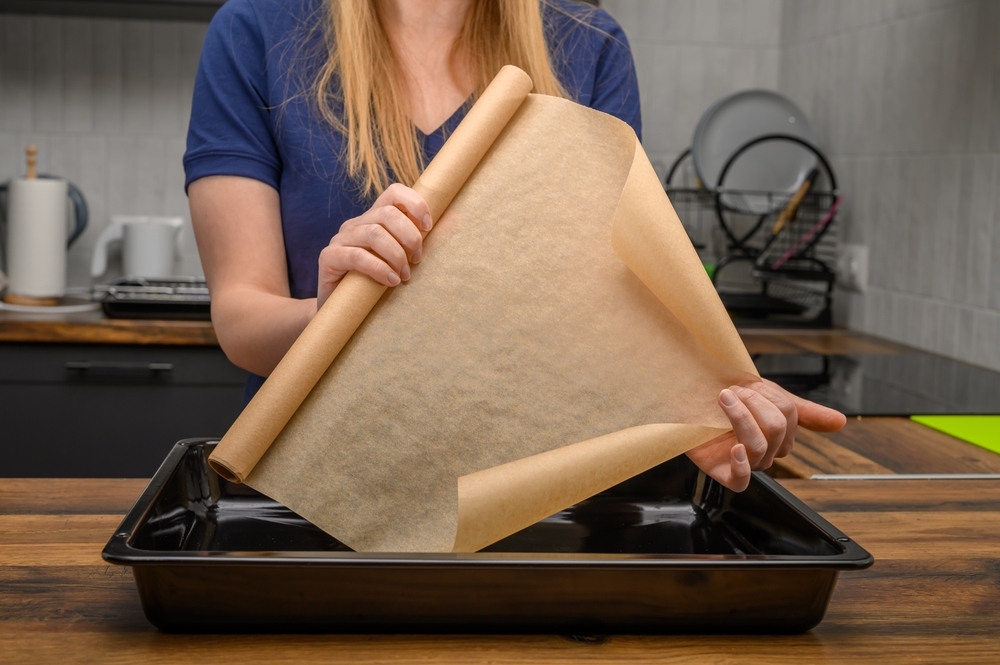Greaseproof Paper vs Parchment Paper: Which Is Best for Your Baking and Packaging Needs?
By Alysse Phily · 2. July 2024
Greaseproof paper and parchment paper serve different purposes, and understanding the differences between greaseproof paper and parchment paper is essential.
Greaseproof paper is great for non-stick, oil-resistant needs, while parchment paper excels in heat resistance.
This article will help you choose the right one for your baking, cooking, presentation and packaging tasks.
Key Takeaways
- Greaseproof paper is versatile and eco-friendly, ideal for tasks like baking cookies, roasting veggies, and crafting piping bags due to its non-stick and oil-resistant properties.
- Parchment paper, made from cellulose treated with sulfuric acid, is highly heat-resistant and non-stick, making it perfect for baking at high temperatures and ensuring flawless results.
- Choosing the right paper depends on your specific needs: greaseproof paper is excellent for oil-resistant and eco-friendly options, while parchment paper works best for high-heat baking and moisture resistance.
Introduction
Greaseproof paper and parchment paper might look similar, but they serve different purposes in the kitchen.
Greaseproof paper is known for its non-stick, oil-resistant properties, making it a versatile tool for various baking needs.
On the other hand, parchment paper, developed in the 19th century, is celebrated for its non-stick and heat-resistant qualities.
Once you familiarise yourself with the unique properties of each paper type, you’ll be better equipped to select the one that fits your specific needs. 🍪
Understanding Greaseproof Paper
 roll of greaseproof paper
roll of greaseproof paper
Greaseproof paper is a kitchen staple known for its non-stick and oil-resistant features. It’s often used to line trays and cake tins, preventing food from sticking and making cleanup a breeze.
Unlike waxed paper, which can leave a residue, greaseproof paper offers a clean and efficient solution for baking and cooking, making it a preferred alternative to wax paper.
Greaseproof paper’s versatility distinguishes it from the rest, including bakery paper.
It can be used in a variety of baking applications, from lining trays to creating paper icing bags for decorating baked goods.
Additionally, greaseproof paper is available in various thicknesses and sizes, allowing for customisation to fit specific needs.
This makes it an excellent choice for both home bakers and professional kitchens looking for a reusable, eco-friendly option.
Moreover, greaseproof paper is safe for use in the oven up to temperatures of 215-230°C, and it can even be used in the microwave with proper supervision.
This characteristic renders it a trustworthy option in numerous cooking scenarios, including:
- Baking cookies 🍪
- Roasting vegetables 🥕
- Cooking fish en papillote 🐟
- Reheating leftovers 🍲
What Is Parchment Paper?
 brownies on parchment paper
brownies on parchment paper
Parchment paper, also known as baking parchment, has a rich history dating back to the 19th century when it was developed by French scientists Jean-André Poumarède and Louis Figuier.
Unlike greaseproof paper, parchment paper is made from cellulose, a plant-based compound, and is treated with sulfuric acid to give it its unique properties.
This treatment process not only makes parchment paper non-stick but also highly heat-resistant, allowing it to withstand oven temperatures up to 220°C (425°F) without burning or releasing harmful chemicals.
Due to these properties, parchment paper is an indispensable asset in baking and cooking, guaranteeing flawless baked goods each time. 🍞
What is Greaseproof Paper?
Greaseproof paper is a non-stick, oil-resistant kitchen tool that’s ideal for a variety of baking needs.
Its non-stick surface prevents food from sticking, while its oil-resistant properties ensure that greasy foods won’t leave unsightly stains or residues.
It is perfect for applications like lining trays, wrapping food, and even crafting temporary piping bags for icing and sauces.
Another significant advantage of greaseproof paper is its eco-friendly nature. Many versions are biodegradable and compostable, making them a sustainable choice for environmentally conscious bakers.
Additionally, greaseproof paper is customizable, available in different thicknesses and sizes, and can even be printed for branding purposes. This versatility makes it an excellent option for both home and professional use.
Greaseproof paper is safe to use in the oven up to 215-230°C and is also suitable for microwave use, provided proper supervision is maintained to avoid overheating.
It serves as a practical and dependable alternative for a range of cooking and baking endeavours.
Key Differences Between Greaseproof Paper and Parchment Paper
The primary difference between greaseproof paper and parchment paper lies in their manufacturing processes and intended uses.
Greaseproof paper is typically not recommended for use in ovens at very high temperatures, as it can only withstand heat up to 220°C.
In contrast, parchment paper, treated with sulfuric acid, can handle higher temperatures, making it better suited for baking at higher heat levels.
While both papers are non-stick, parchment paper has the added benefit of a silicone coating on both sides, which enhances its non-stick properties and moisture resistance.
It’s perfect for tasks such as baking cookies and cakes where a reliable non-stick surface is paramount.
Non Stick Baking Paper: A Closer Look
 woman holds roll of brown baking paper
woman holds roll of brown baking paper
Non-stick baking paper, often referred to as baking parchment, is a game-changer in the kitchen. Its non-stick properties come from a thin silicone coating on both sides, which prevents food from sticking and ensures easy cleanup.
It’s an ideal choice for lining baking trays and cake tins, including the versatile cake tin, wrapping food, and creating paper icing bags.
One of the standout features of non-stick baking paper is its heat resistance. It can be used in ovens up to 230°C without any issues.
This high heat resistance, combined with its non-stick surface, makes it ideal for baking a wide range of items, including:
- Cookies 🍪
- Cakes 🎂
- Breads 🥖
- Pastries 🥐
- Roasted vegetables 🥦
Additionally, the silicone coating on non-stick baking paper helps prevent moisture from affecting baked goods, ensuring that your cookies and pastries come out perfectly crisp every time.
It is a favoured choice among bakers seeking a reliable and adaptable baking paper with a thin coating.
Uses of Greaseproof Paper in Cooking
Greaseproof paper is incredibly versatile and can be used in a variety of cooking applications.
One of its primary uses is to prevent foods with grease from leaving oily deposits, making it an excellent choice for lining trays and wrapping high-fat foods.
Additionally, it can be used in a frying pan as a non-stick layer for cooking fish, ensuring that the fish doesn’t stick to the pan and cooks evenly.
Another practical use for greaseproof paper is in the microwave. It can be used safely to heat or reheat foods without the risk of residue or contamination. This characteristic renders it an easy-to-use option for swift cooking tasks.
Moreover, greaseproof paper, also known as reusable sheets, can be reused, especially when baking cookies.
After the first use, it can be wiped clean and used again, making it a cost-effective and eco-friendly option.
It can also be fashioned into a makeshift piping bag for icing and sauces, adding to its versatility in the kitchen.
Heat Resistance and Safety Considerations
When using parchment paper and greaseproof paper in the oven, it’s essential to consider their heat resistance and safety precautions.
Here are some key points to keep in mind:
- Parchment paper can withstand higher temperatures, up to 220°C, without burning or releasing harmful chemicals.
- It is important to prevent the parchment paper from coming in contact with heating elements as it could lead to a fire.
- Greaseproof paper has a lower heat resistance and should not be used at temperatures above 190°C.
Tips for Choosing the Right Paper for Your Packaging Needs
The selection of the correct paper for your packaging needs is vital to maintain the quality and aesthetic of your baked goods.
Effective packaging protects food from contaminants and environmental factors, ensuring freshness and extended shelf life.
Customised packaging, such as branded greaseproof paper, can also create memorable unboxing experiences that turn first-time buyers into loyal patrons.
In choosing the ideal paper for your particular requirements, you should weigh factors like heat resistance, non-stick features, and environmental impact.
Parchment paper, with its non-stick surface and heat resistance, is ideal for baking but may tear easily and doesn’t seal well.
Greaseproof paper, on the other hand, offers oil-resistant properties and can be customised for branding, making it a versatile choice for various applications.
For sustainable options, consider compostable resealable bags or paddy straw trays, which offer both functionality and eco-friendliness.
These innovative packaging solutions support brand-specific printing and can enhance the appeal of your products while promoting sustainability. 🌿
Summary
In summary, both greaseproof paper and parchment paper have their unique properties and applications in the kitchen.
Greaseproof paper is known for its non-stick, oil-resistant features, making it ideal for various baking needs.
Parchment paper, with its non-stick and heat-resistant properties, is perfect for high-temperature baking and cooking tasks.
When choosing the right paper for your packaging needs, consider factors such as heat resistance, non-stick properties, and eco-friendliness.
By understanding the key differences between greaseproof paper and parchment paper, you can make an informed decision that best suits your specific cooking and baking requirements.
Frequently Asked Questions
What is the main difference between greaseproof paper and parchment paper?
The main difference between greaseproof paper and parchment paper is that greaseproof paper is oil-resistant but not suitable for high temperatures, whereas parchment paper is heat-resistant and has a silicone coating for enhanced non-stick properties. This makes parchment paper more versatile for various cooking needs.
Can greaseproof paper be used in the oven?
Yes, you can use greaseproof paper in the oven, just make sure to keep the temperature below 220°C to be safe.
What are some alternatives to greaseproof and parchment papers?
You can use non-stick reusable liners like Bake-O-Glide®, aluminum foil with extra oil, or greased pans with butter or shortening as alternatives to greaseproof and parchment papers. Try these out to see which one works best for your needs!
How can I choose the right paper for my packaging needs?
To choose the right paper for your packaging needs, consider factors like heat resistance, non-stick properties, and eco-friendliness. Customised packaging and compostable options can also improve the appeal and sustainability of your products.

